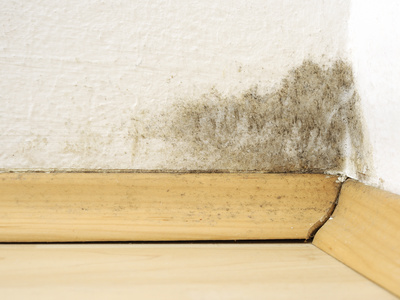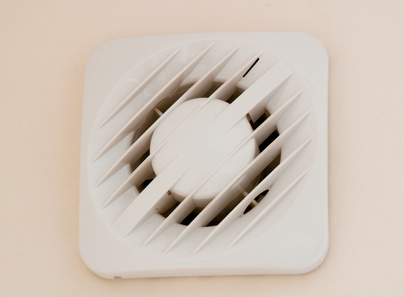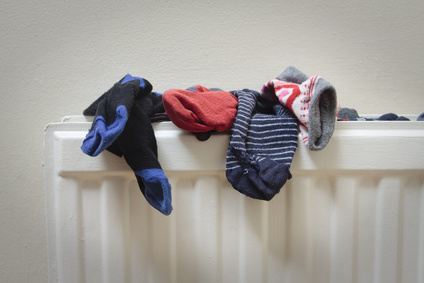Mould, Mildew & Condensation: Tenant or Landlord Responsibility?
Published on June 1, 2015 by Sarah Mac

We talk a lot about fair wear and tear. There is a lot to understand, and many areas that can be considered ‘grey’. One of these concerns condensation and mould / mildew.
If at the end of a tenancy, you find your property stricken by mould or mildew, you’ll need to consider quite a number of factors before deciding whether you can fairly pass any of the costs involved in remedying the problem on to the tenant. And it’s those factors we’ll be looking at in this article.
The Causes of Damp
Problems caused by damp and condensation can be caused by a raft of interior or exterior issues. Exterior issues can include blocked damp courses, roofing problems, dripping overflows, leaks that aren’t dealt with, brickwork pointing glitches and broken guttering or down pipes. When water seeps in due to any of these issues it can cause staining leading to mould and mildew. But such staining can also be caused by excessive condensation, which may be a result of negligence on the part of the tenant.
You can’t avoid the fact that there will be moisture in the air, it’s natural. However, if there is excess moisture, when air becomes cold, it isn’t able to hold on to it, so it forms droplets on windows and other places where the air flow isn’t efficient. These droplets can lead to mould growth which can affect furniture, upholstery, clothing, walls and window frames.

Water droplets caused by a mixture of moisture and cold air can lead to mould growth which can affect furniture, upholstery, clothing, walls and window frames.
Factors to Consider in Attributing Responsibility for Mould
Property Age & Style
Older properties are generally known to be more prone to mould and condensation issues. Window styles play quite a major role. If timber windows in an older property have been replaced with UPVC sealed double glazed units in an attempt to reduce maintenance and prevent draughts, they could be behind condensation issues. This is because they tend to seal a property completely so that no moisture can get in or out, unless they are fitted with vents, or regularly opened.
Check: If your property is older you can expect a higher degree of damp. If it is fitted with sealed double glazed windows that don’t have vents or openers, it will generally be down to you as the landlord to cover the costs of any mould that has developed, unless you can prove tenant negligence in other areas (see below). If vents have been blocked by your tenant, or windows have not been opened when for example using a tumble dryer, you could probably go ahead and claim compensation at a fair rate.
Extractor Fans & Air Vents
Bathrooms without windows should be fitted with extractor fans. To ensure these are used as intended, they should be linked to the light switch. Both bathroom and kitchen extractor fans should be regularly checked for efficiency to ensure they can adequately remove excess moisture.
Check: If your property is not fitted with appropriate extractor fans or air vents, or such features were not in fully functioning order at the start of a tenancy, then you should expect to cover the costs of any resulting mould growth. If however such features are installed and were in full working order at tenant check-in, you can reasonably expect them to be used. However, you should be making regular checks of the property, every quarter is a good frequency, to ensure the fans are in working order and being used properly, i.e. not turned off at the isolator switches. Identifying any issues concerning mould growth early on will mitigate any potential damage.

You should make regular checks of your rental property to ensure extractor fans are in working order and being used properly, i.e. not turned off at the isolator switches.
Tumble Dryers
A major cause of mould growth is the use of tumble dryers without adequate ventilation. If you don’t supply a vent hose then you can reasonably expect tenants to open a window to ensure moisture has a route of escape.
Check: If you can prove a dryer has been used without sufficient ventilation, and mould has started to appear in the vicinity of the appliance, you can assume tenant negligence. Regular inspections should uncover what you need to know. However, it is important to recognise that you have a responsibility to deal with any security issues that may arise as a result of advising tenants to leave windows open, in particular if the property is on the ground floor. Lockable window stops are a good solution.
Drying Washing
When you hang wet washing to dry over heaters or radiators, excess moisture is released into the air which can lead to mould growth throughout a property.
Check: If you spot water staining or paint bubbling on the walls behind radiators, or staining on the radiators themselves, then it is likely tenants have been drying clothes on them. This can be classed as chargeable negligence, although you should make it clear to them that practices like this are not permitted. If your property does not have an outside space to dry washing, then you should advise your tenants of safe ways to do so.

When you hang wet washing to dry over heaters or radiators, excess moisture is released into the air which can lead to mould growth throughout a property.
Leaks
Leaks that go on continuously can lead to anything from mould spores to collapsed ceilings. Of course, the repair of any leak is down to you as the landlord, but the tenant does have a duty to report it and you should make this clear to them.
Check: You can reasonably expect tenants to report leaks immediately. If they fail to do so, then you can pass on the costs of any remedial works required to repair the damage caused.
Mitigating Issues
If your property is prone to condensation, a dehumidifier could prove a wise investment. They help draw out moisture from the interior environment and in doing so, help to keep the condensation down.
Regular interim inspections of your property are vital so you can spot any developing issues and deal with them sooner rather than later.
Maintenance is also essential. Blocked guttering and down pipes can cause a host of issues, and it is the responsibility of the landlord to keep these clear on a regular basis.
Tenant Responsibilities
Other than the responsibilities mentioned above, you can also reasonably expect tenants to attempt to clean away any mould that has developed using purpose designed products. If there is evidence that such cleaning has been attempted, and the mould wasn’t a result of tenant negligence, then the removal of any resulting staining will generally be down to you as the landlord.
In Summary
If there is clear evidence that mould or mildew growth is the result of negligence on the part of the tenant rather than fair wear and tear, and you can demonstrate that you have taken steps to mitigate the risk of potential damage with plenty of advice and regular maintenance, you should be able to make a claim for the costs involved in making good.

